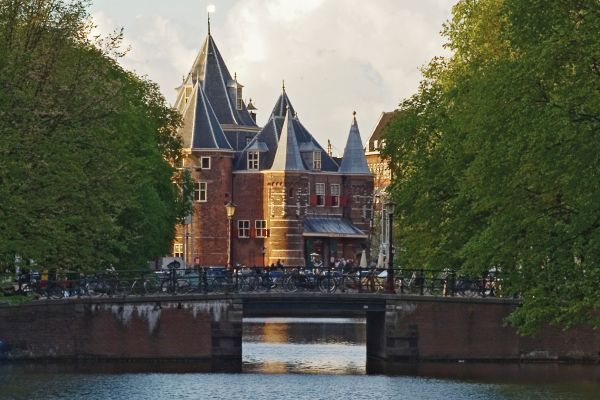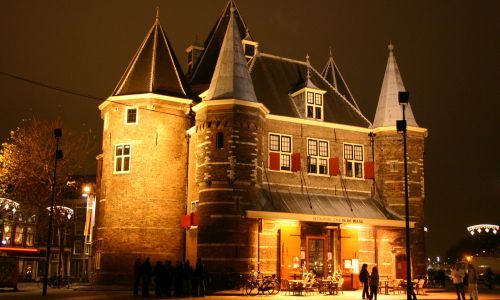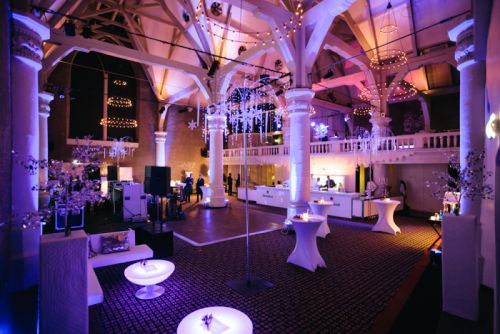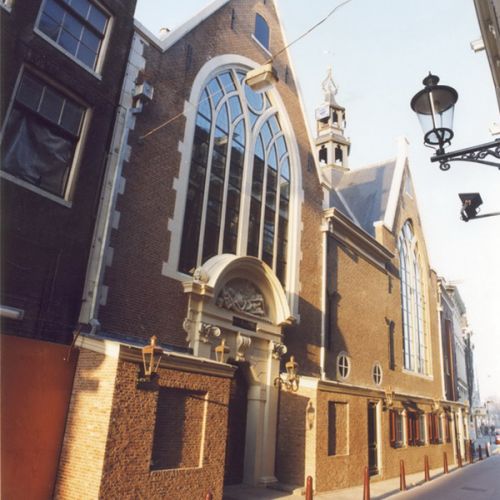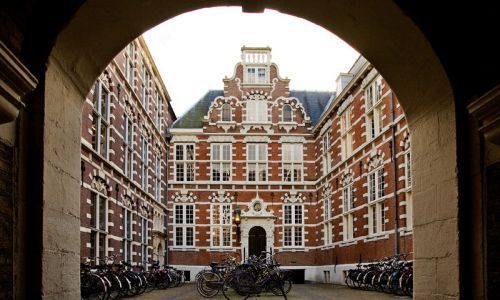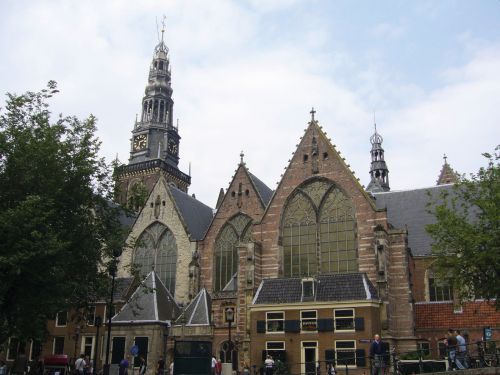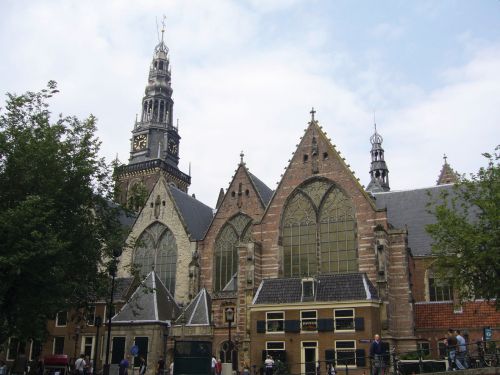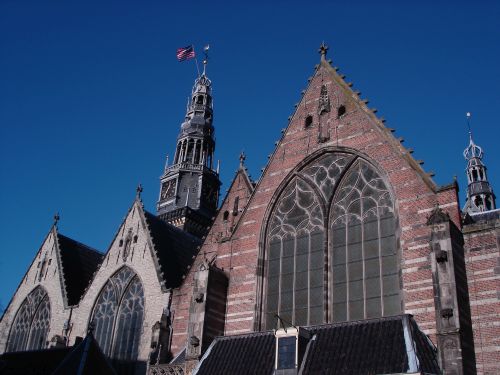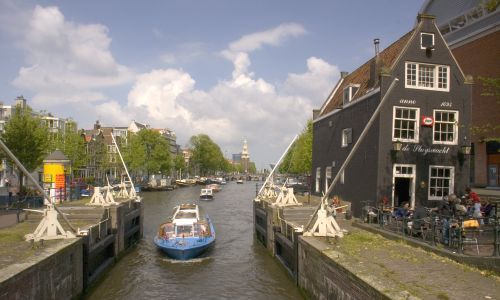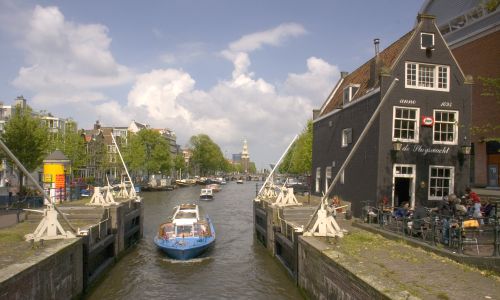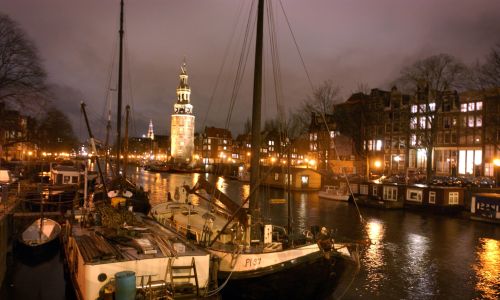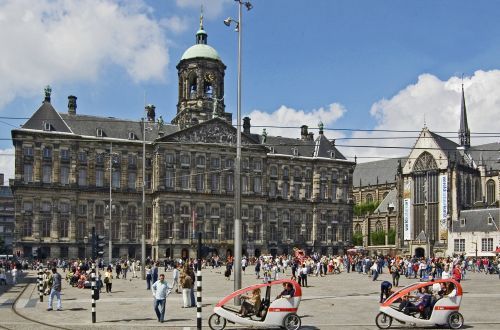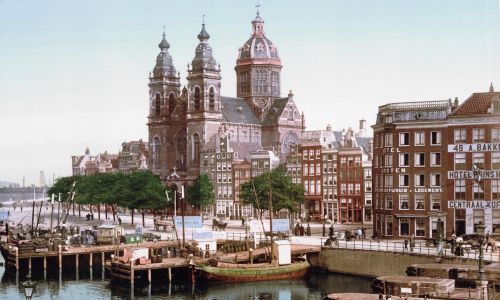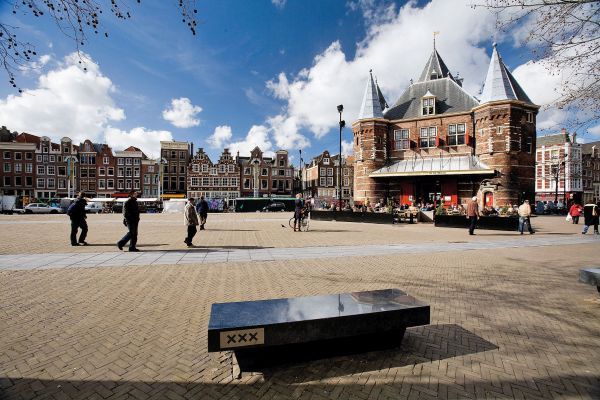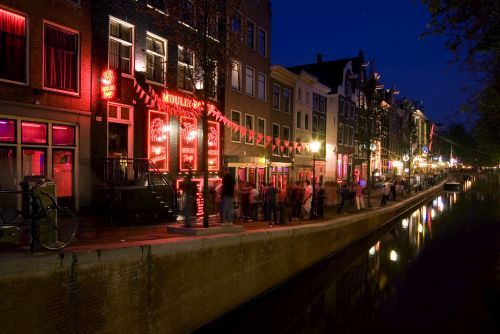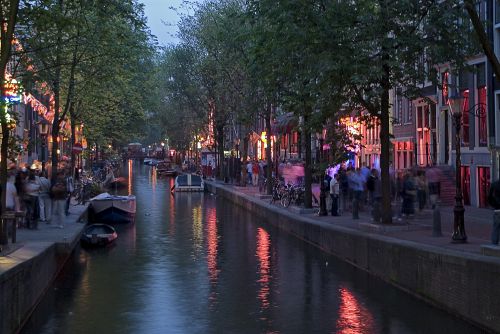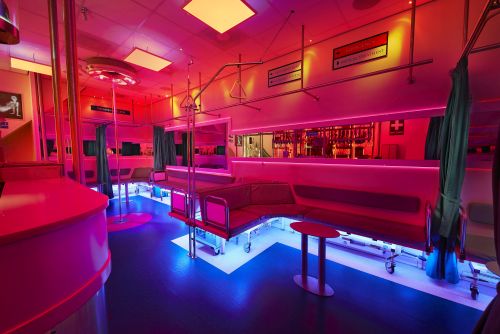Kloveniersburgwal
-

Kloveniersburgwal Waag
-

Kloveniersburgwal Trippenhuis
-

Kloveniersburgwal The narrow house
Kloveniersburgwal
Until the end of the 16th century, the Kloveniersburgwal was the outer city canal of old Amsterdam. The canal gets its name from the city militia that practiced here using rifles that were called Klovers. On the corner of the Kloveniersburgwal and the Amstel was the tavern that the Kloveniers visited after practicing. Large portraits of them hung on the walls in the tavern. The most famous group portrait of a militia group is Rembrandt's 'De Nachtwacht' (The Night Watch). The tavern is still used and is now hotel NH Collection Amsterdam Doelen.
Trippenhuis
The striking building at Kloveniersburgwal 29 is called the Trippenhuis. Built in 1662, this was the home of the Trip family. This family had become rich through trade in war material, including artillery, ammunition and even complete warships. The chimneys of the house are shaped like cannons. The Trippenhuis is one of the widest residential houses in Amsterdam at over 22 meters. Today, the Royal Netherlands Academy of Arts and Sciences is located here.
The narrow house
Opposite the Trippenhuis, at Kloveniersburgwal 26, is a very narrow house. The width is only 2.44 meters at the front (about 5 meters at the rear). The story goes that the facade is as wide as the front door of the Trippenhuis. An employee of the Trip family said during the construction of the Trippenhuis: "I would like to have a house as wide as the front door of the Trippenhuis." With the remains of the building material, this house would have been built for him. However, this interesting story is not true, because when the house was built in 1696, Hendrick Trip had already died.



